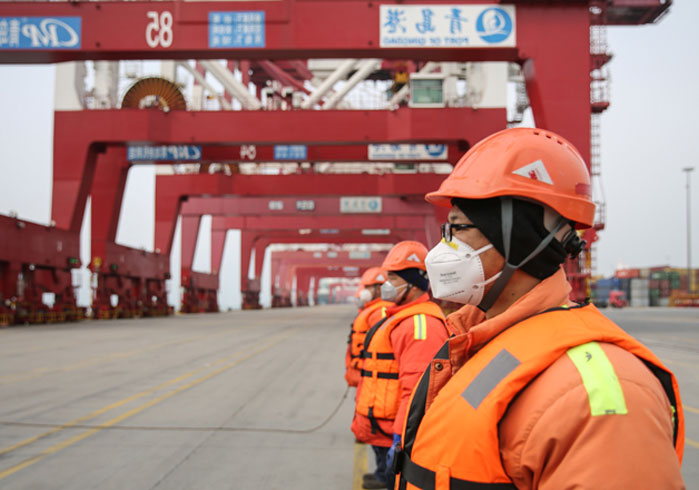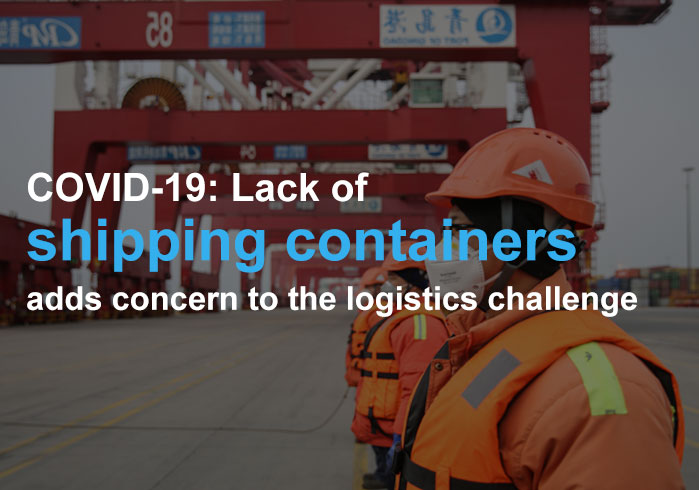
The impact Coronavirus is having over the economy and specifically over logistics looks harder every day. Ports around the world, especially in China, are stepping up their precautions on incoming vessels. The landscape somewhat looks grimmer added to the fact that there was already a container shortage even before all this started to happen.
Before being officially declared a pandemic, the COVID-19 outbreak was limited only to Asia. Vessels who made stops in Chinese ports suffered of big unloading holdups and delays that left shippers waiting for hundreds of thousands of empty containers to move their products. As the disease went global, ports not only in Asia but all around the world, started to quarantine incoming vessels. Especially for containers coming from countries where the pandemic hit the hardest, quarantines last around 14 days, threatening to make the container scarcity even worse.
“That’s millions of tons of capacity that’s wiped off the board.” Greg Cherewyk – President of Pulse Canada.
Container cycle bringing goods to any country in a regular environment would be unloaded, filled with goods for exporting and shipped to another country. In cases like Brazil and Canada, these countries are regular for exporting coffee, meat, paper, lumber among others to China, but when this cycle gets interrupted or delayed, disruptions start to happen at some point in the supply chain.
Currently, key ports around the world like Antwerp, Rotterdam, Hamburg, and Los Angeles are registering the lowest levels ever recorded of capacity (available containers) according to a Bloomberg report. Imports to the U.S. fell as much as 13% In the first two months of 2020. According to Lee Klaskow, Intelligence analyst at Bloomberg, international volume could begin to increase as Chinese exports pick up.
Running Behind
Canada lacks in container capacity to meet its exports which currently are running as much as two months behind after at least 30 vessels canceled their sailings from China to Vancouver since January.
As expected, problems also arise the other way, companies struggle to adjust their supply chain to other Asian markets since China ceased to be the most attractive option. This usually represents longer transit times and higher shipping costs. Undoubtedly, the Coronavirus has put the logistics industry to a test and perhaps, in the near future as the pandemic evolves, a high number of shippers will have to reinvent their supply chain in order to mitigate the impact this pandemic might have on their businesses.





4 Comments on “COVID-19: Lack of Shipping Containers Adds a New Concern to the Logistics Challenge”
Logistics has been a great challenge since the time Covid-19 has literally taken over the world by great dismay. Thank you Amanda for giving us a greter insight into how Lack of shipping containers are adding to the already existing logistics issues faced by almost all companies such as FMCG, e-commerce, etc. Appreciate you highlighting the lag that’s been presistant due to the same.
We are glad you found our content useful, thank you for reading us!
Hola
Deseo saber si ustedes realizan envios de vehiculos (sedan) desde Miami hasta Venezuela (carabobo), como es el procedimiento, el costo del envío, tiempo del mismo hasta destino y cuanto seria el costo de la nacionalización del vehículo en puerto cabello.
Gracias
Buenos días Francisco,
Si realizamos envíos de vehículos asegurados dentro de contenedores a Venezuela, el transito generalmente toma alrededor de 7 a 15 días dependiendo de la naviera con la que se decida embarcar – Por favor escribanos un correo directamente a solutions@shiplilly.com o llamenos al 888-464-5459 para atender sus requerimientos con más detalle y rapidez. Saludos